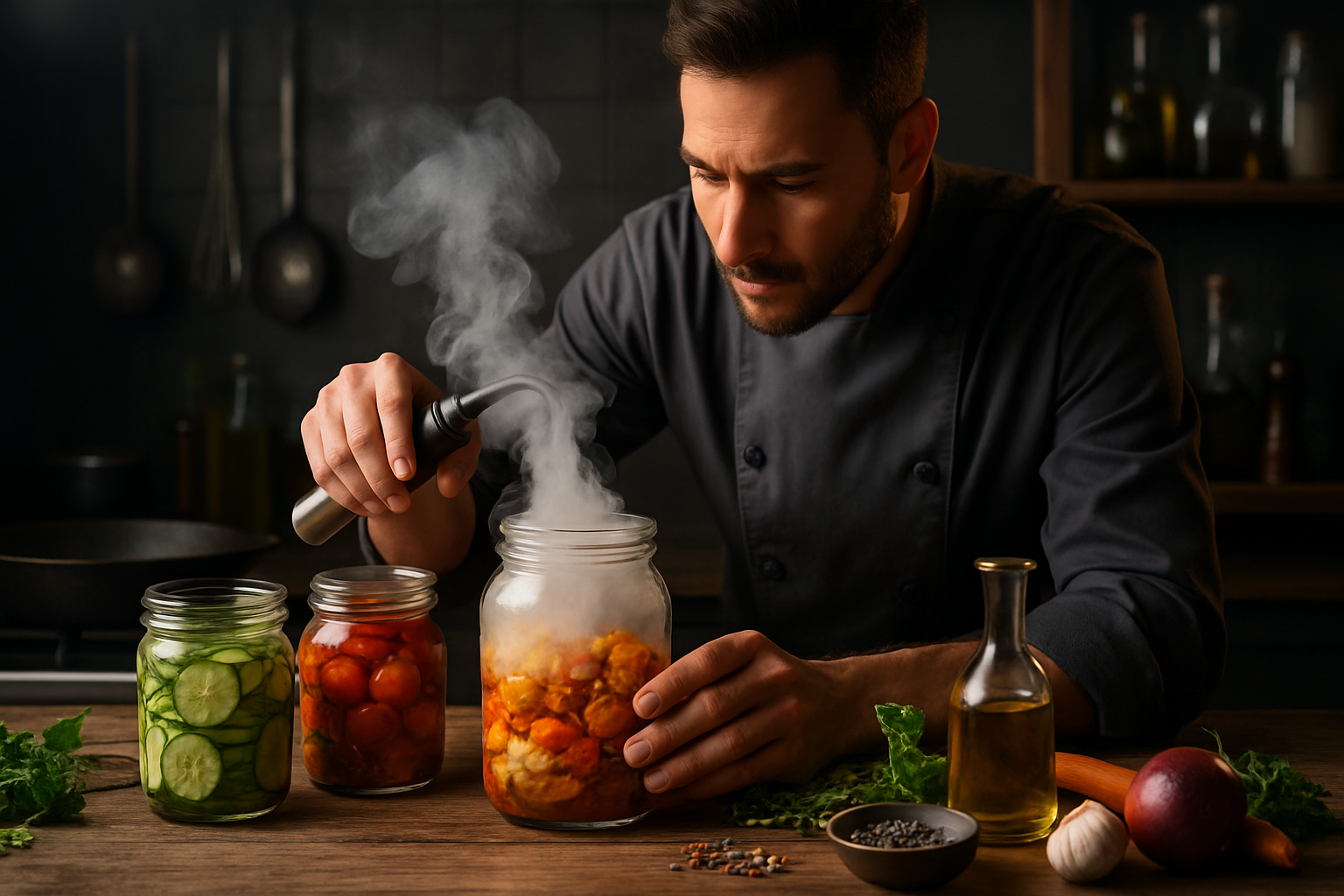Preserving Taste: Modern Methods for Extended Shelf Life
Preserving taste while extending shelf life is increasingly central to contemporary cuisine and gastronomy. Producers, chefs, and suppliers balance sensory quality with safety, using techniques that range from traditional fermentation to advanced packaging and cold-chain logistics. This article outlines modern methods that maintain flavors and texture across beverages, plantbased products, artisanal goods, and streetfood offerings.

Preserving taste while extending shelf life is increasingly central to contemporary cuisine and gastronomy. Producers, chefs, and suppliers balance sensory quality with safety, using techniques that range from traditional fermentation to advanced packaging and cold-chain logistics. This article outlines modern methods that maintain flavors and texture across beverages, plantbased products, artisanal goods, and streetfood offerings.
cuisine and sourcing
Effective preservation begins with sourcing. Ingredients harvested at optimal seasonality retain higher levels of natural flavors and require less intervention to remain palatable. Controlled-atmosphere storage, rapid cooling at harvest, and supplier selection focused on minimal handling reduce microbial growth and enzymatic degradation. For cuisine that emphasizes artisanal or small-batch production, traceable sourcing supports both flavor consistency and regulatory compliance. Careful sourcing also intersects with sustainability objectives, since shorter supply chains and local services can lower the need for energy-intensive preservation later in the supply chain.
fermentation and flavors
Fermentation is both a preservation method and a flavor developer. Lactic, acetic, and alcoholic fermentations create acidic or alcoholic environments that limit spoilage while producing complex flavors used across gastronomy and streetfood. Modern approaches combine traditional starter cultures with controlled temperature and humidity to produce reproducible results for sauces, condiments, and plantbased dairy alternatives. Process monitoring—pH measurement, microbial profiling, and time-temperature control—helps producers balance shelf stability and sensory character without relying solely on additives.
sustainability and seasonality
Sustainability considerations influence which preservation methods are chosen. Techniques that reduce energy use—such as solar dehydration, improved insulation for cold storage, or fermentation that eliminates refrigeration—can lower environmental impact. Seasonality planning, including preserving surplus produce at peak ripeness through canning, freezing, or fermented goods, supports year-round menu offerings while reducing waste. Lifecycle analysis can guide decisions on packaging materials, reusable containers, and localized processing to align preservation strategies with broader sustainability goals.
beverages and mixology
Beverages and mixology demand both flavor integrity and safety. Pasteurization, microfiltration, and high-pressure processing (HPP) are used to reduce microbial loads in juices, bottled cocktails, and non-alcoholic beverages without overly altering aromatic compounds. HPP in particular is applied to cold-pressed juices and ready-to-drink cocktails to extend shelf life while preserving fresh flavors important to modern mixology. Stabilizers and pH adjustments are used carefully to ensure clarity and mouthfeel, with transparent labeling for consumers who value artisanal or plantbased beverage options.
plantbased and artisanal approaches
Plantbased goods and artisanal products present unique preservation challenges tied to texture and flavors. Enzyme inhibitors, controlled dehydration, and modified atmosphere packaging adapted for delicate textures help maintain mouthfeel in plantbased cheeses, spreads, and meat alternatives. Artisanal producers often combine low-tech, flavor-forward methods—smoking, curing, or fermentation—with modern packaging that limits oxygen exposure. These hybrid approaches aim to preserve traditional flavors while meeting shelf-life expectations for retail distribution and local services in your area.
mixology, streetfood, and culinary techniques
Streetfood vendors and cocktail bars use practical preservation strategies that prioritize speed and safety without erasing regional flavors. Acidification, refrigeration, and portioned preps reduce waste and preserve toppings, garnishes, and mixers. In urban gastronomy contexts, small-scale pasteurizers, rapid chilling units, and sealed dispensing systems help maintain consistent beverage and streetfood quality across service periods. Training in safe handling, combined with ingredient-level controls like sourcing and seasonality planning, supports both flavor retention and consumer safety.
Preservation techniques should be selected based on the product’s composition, intended shelf life, and sensory goals. Combining traditional methods such as fermentation with modern technologies—cold chain logistics, HPP, modified atmosphere packaging, and precise sourcing—allows producers to extend shelf life while preserving characteristic flavors. Attention to seasonality, sustainability, and artisanal practices helps maintain culinary diversity as products move from producer to plate.




